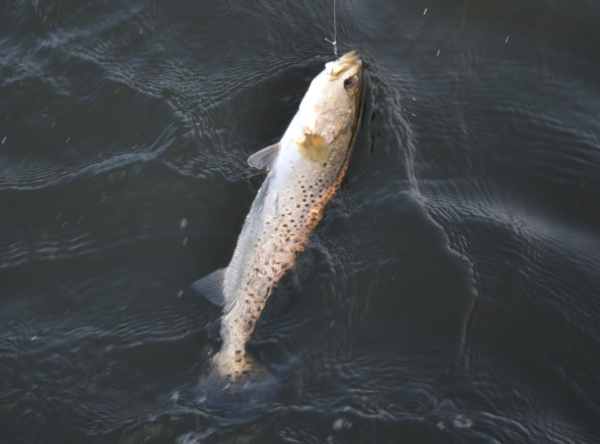Ask a Biologist: Why Am I Catching Mostly Sub-Legal Sea Trout
 |
It's good to hear that you are catching lots of fish. Your observation on the high number of sub-legal trout has been noted by other anglers as well. With a minimum size limit in effect there will always be a “stacking” of fish just under legal size. Fishing pressure is so high on this popular game fish that when the fish grow into the legal size, they have a very high chance of being captured. In fact, a recent assessment of the population of trout reveals that the number of trout in Texas waters has actually doubled since the 1980s. This means that more small trout are available to be caught. But, it also means there are more larger trout available.
This phenomenon of stacked fish just below the limit was noted when the minimum length was 12 inches, when it was 14 inches, and currently for the 15 inch limit. Thus, no matter what the size limit, anglers will be catching and releasing lots of spotted seatrout just short of the legal size.
The most important benefit of the 15-inch size limit has clearly been an increase in spawning success of spotted seatrout. Since imposition of the size limit in 1990, Coastal Fisheries bag seine samples have documented high juvenile catches compared to years before 1990.
We follow closely the patterns of spotted seatrout harvest and mortality and if patterns change then we are ready to alter the bag and size limits if needed. Presently, our trout populations are very healthy and all indications are that the population can actually increase to a higher level without harm to the bays.
Given the increasingly high fishing pressure on spotted seatrout and their vulnerability to freezes, it is wise management to allow these fish to keep our bays full of juveniles ready to take their parents' places. And, of course another benefit of the larger size limit is that anglers will be rewarded with larger fish to take home. The average weight of trout landed by Texas anglers has risen from one pound in 1975 to nearly two pounds in 1999.
Concerning the keeping of small trout by guides and others, we are concerned about this. We conduct surveys of anglers and if illegal fish have been kept we inform the parties fishing that this is a violation of the law and they can be ticketed if a game warden sees them. When we see instances such as this we inform the local game wardens so they can be on the lookout for these violators. Game Wardens routinely patrol coastal areas, but unfortunately there are anglers out there who keep illegal fish and are not caught. Given the large expanse of Texas coastal waters it is sometimes easy for violators to avoid being checked. If you see instances where illegal fish are being kept you can notify “Operation Game Thief” by calling 1-800-792-GAME.
Louisiana and Texas have different management strategies for managing trout. Our goals are to ensure that trout have the maximum potential for spawning success given all the different environmental factors, that there are adequate numbers of trout for anglers to catch, and to maintain a trophy fishery. To meet these goals, a 15-inch minimum size limit is required. Louisiana biologists are looking at the Texas experience and they are interested in pursuing whether a 15-inch rule will also work as well in Louisiana as it has in Texas.


 Advertising
Advertising